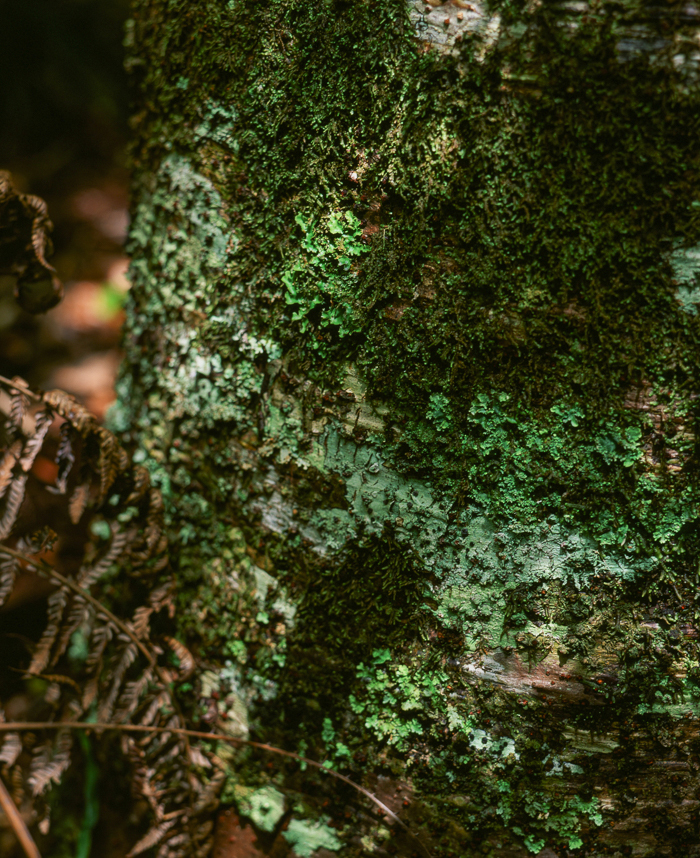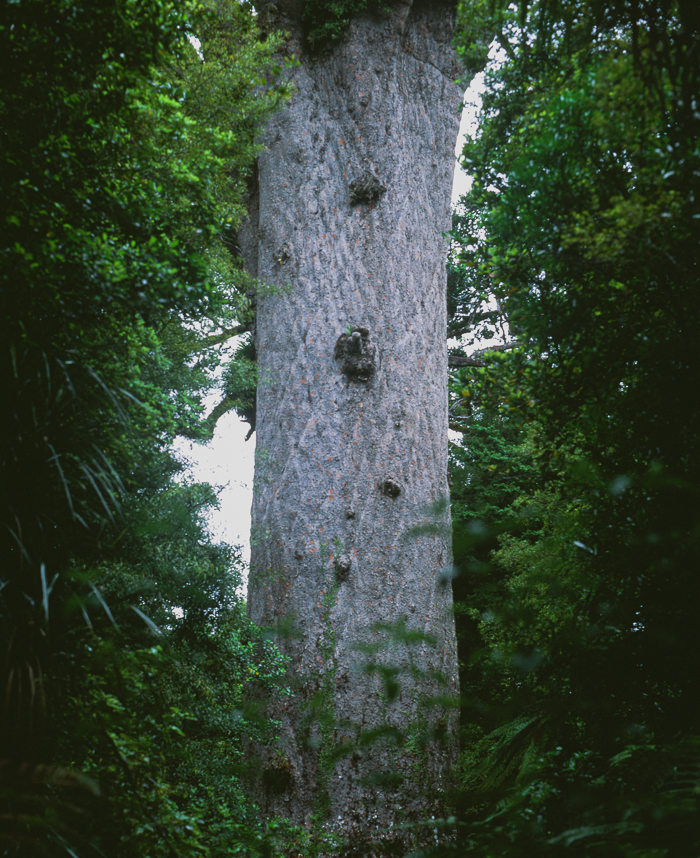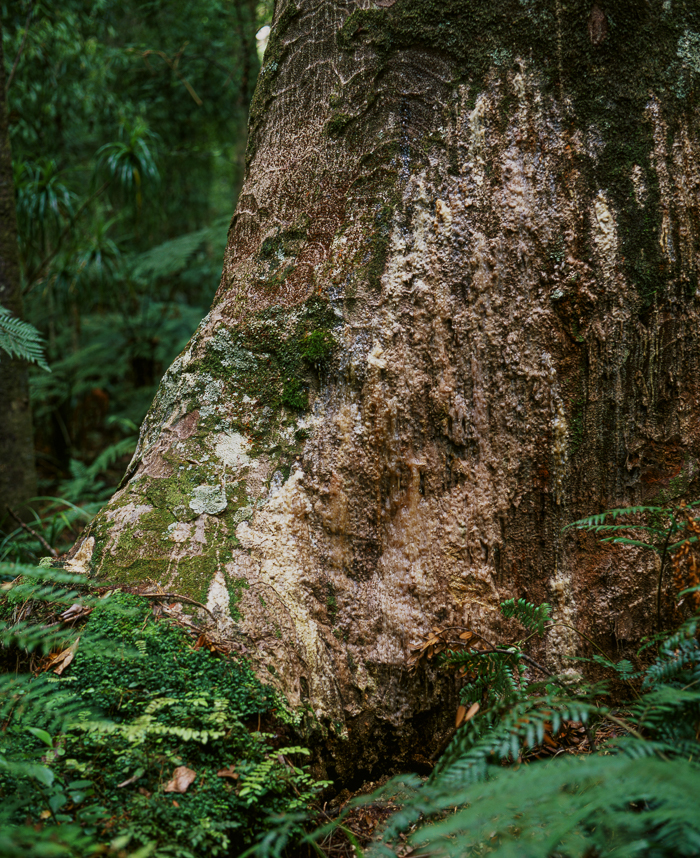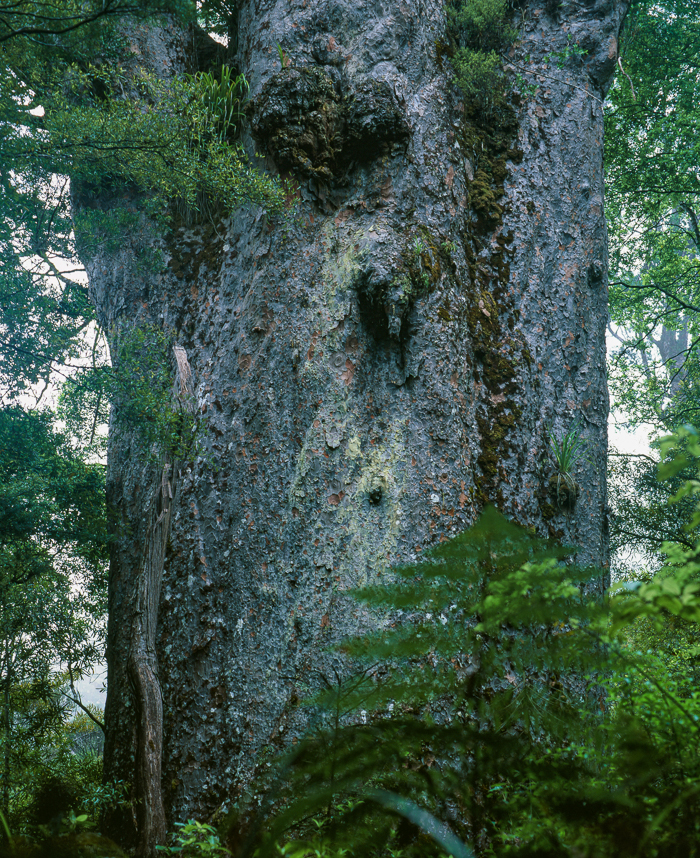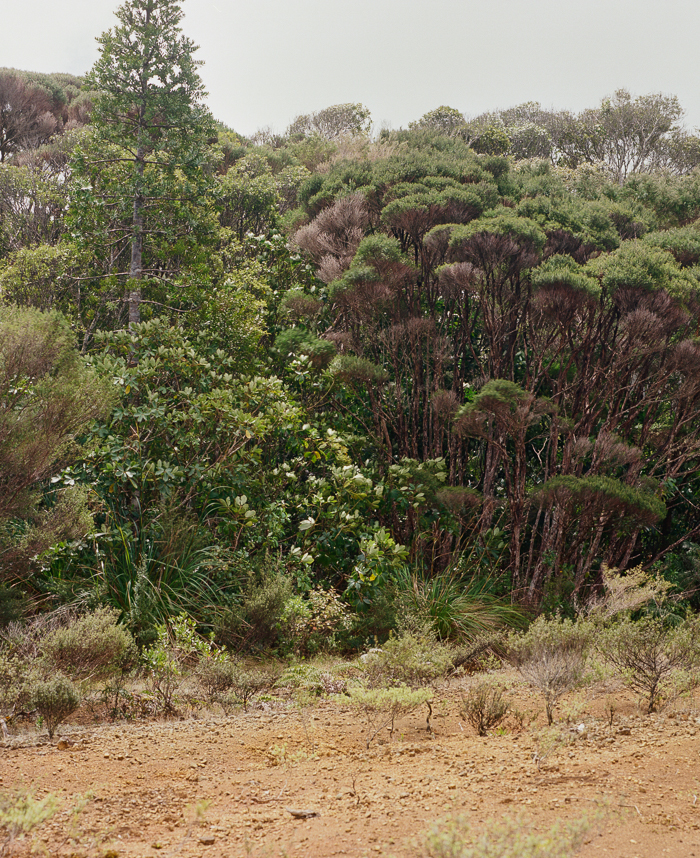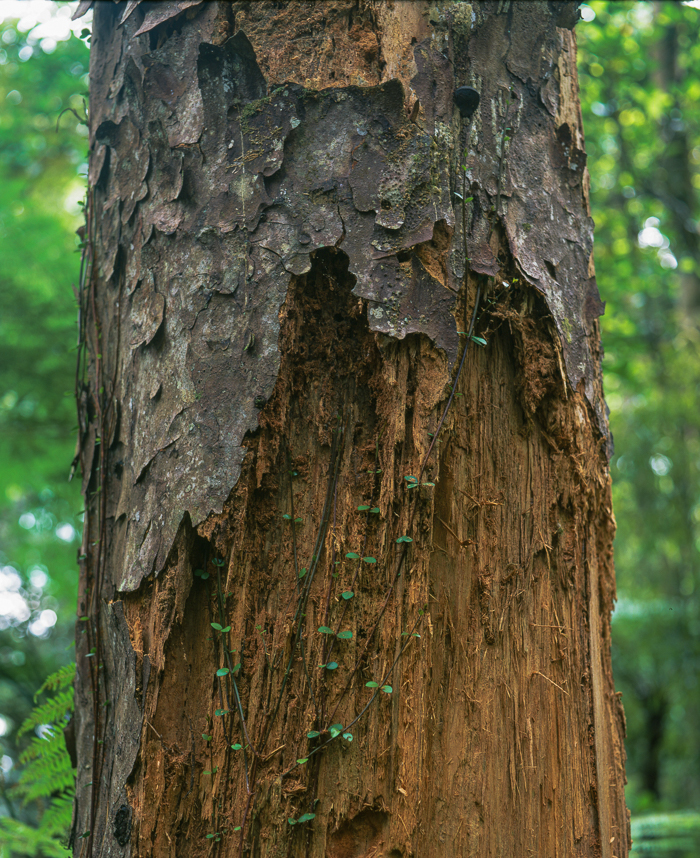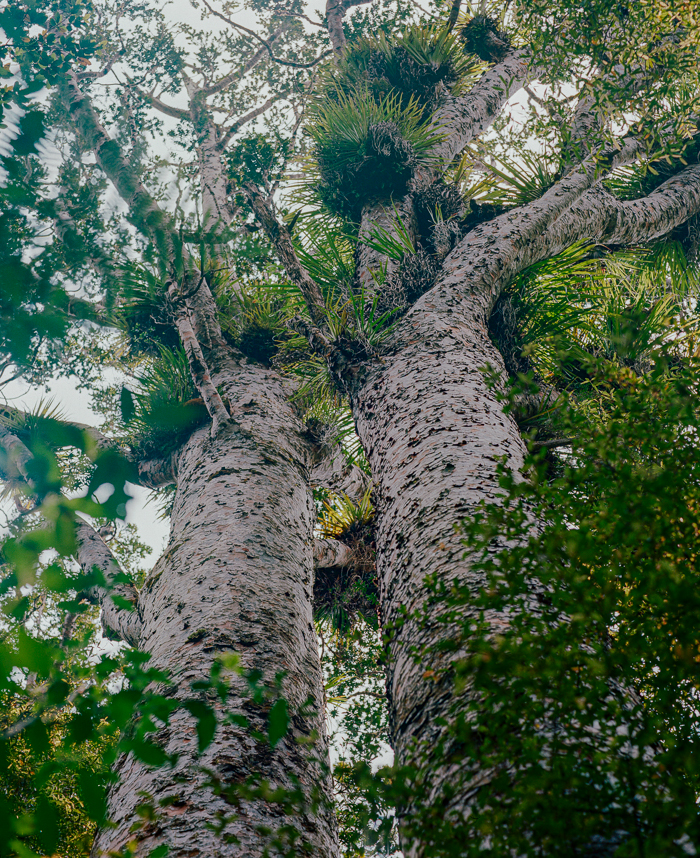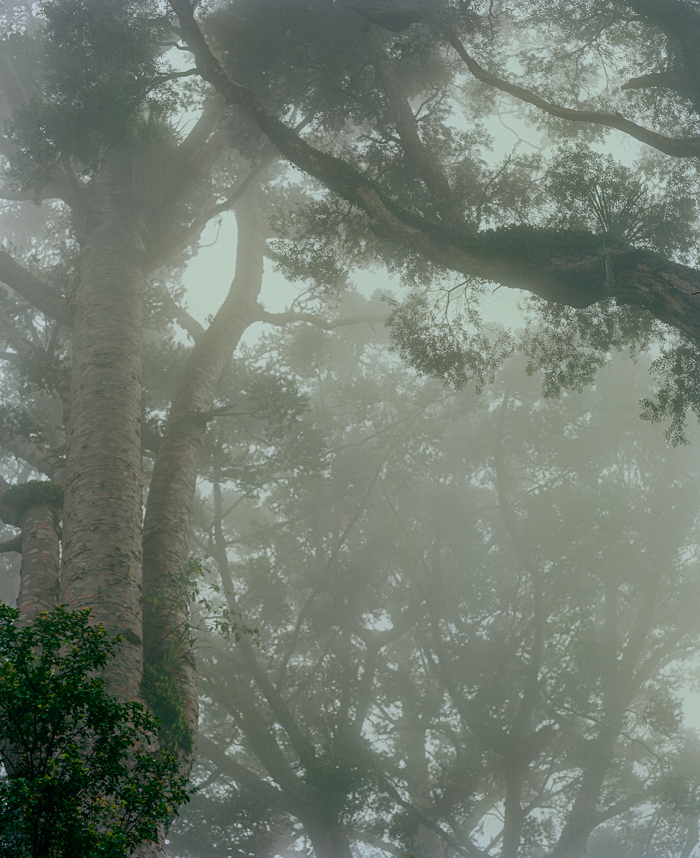
Prologue
The North Island of Aotearoa/New Zealand is the center of the universe for Māori, its indigenous population. Over time it has provided, been depleted and regenerated. From afar, it is idyllic and from within it is overwhelmingly vast, with networks of life that weave together the ngahere, maunga and moana; the forest, mountain and sea.
Aotearoa exists with an ancient ecological life force pulsing through its natural wonders, legends and history. Persistent and patient, these spiritual forces may lay dormant for stretches of time or be mistaken for explainable phenomena. They may be overlooked in favor of Western science, be invigorated by karakia (Māori prayer or incantation) or called upon with the traditional medicinal practice of rongoā.
Life force existed when the Māori god Tāne pushed apart his father and mother to create light and spark life in the world; it witnessed the Māori half-god Maui pull a great fish from the Tasman Sea to create the North Island; beckoned the first Polynesian inhabitants ashore as the tide pulled in their canoes from the land of Hawaiki just as it did with the European ships that followed; endured the politics that shaped modern New Zealand’s founding documents He Whakaputanga o te Rangatiratanga o Nu Tireni (The Declaration of Independence of the United Tribes of New Zealand) and Te Tiriti O Waitangi (The Treaty of Waitangi); is woven into the resulting land claims, settlements, protests and injustices of those documents; contextualized in the stories, spoken in Te Reo, shared at the marae (communal and sacred meeting house); felt through karakia; nourished through the protection of forests and waters against disease and spiritual malaise; tested with the encroachment of human development and the climate crisis; and is palpable in the energy permeating New Zealand’s landscape today.
The intangible life force is integral for sustaining the “living connection” to the forest that bolsters the Māori way of life...
“A kauri tree can stand for 1,500 years absorbing energy from the sun and yet...the only way science knows how to extract that energy is by burning the tree. Yes, that’s one way of extracting that energy. Whereas Māori and a lot of white people know that you can get that mauri (life force), that area around the tree, and you can absorb a lot of that energy of the tree just by being in its presence. That’s why I feel that when you are absolutely tired you can go for a walk or a jog in the forest and you can become energized and that’s because of the energy that the tree has existing around it all the time. Do you see anything when you look at a tree?”
– Kevin Prime, Ngāti Hine kaumātua and kaitiaki of the land
Following the evolution of Aotearoa since its mythological creation to British colonization to present day, each part of this text shares different stories of how native wildlife, land ownership, industrialization, and the battle between mātauranga Māori (traditional knowledge) and Western principles shape life in Northland, New Zealand. Along the way, stories of individual Māori, diaristic field accounts, historical timelines and contemporary practices show how, despite poor institutional memory, ecosystems remain connected.
The people and landscapes of modern Aotearoa hold firmly to their spiritual and colonial history as they work to build the future of New Zealand. Indigenous wildlife is witness and subject to cycles of land stewardship, governance, territorial conflict, economic growth, resource extraction and exploitation, faith and spirituality, social uprisings and shifts in ideology. Some species observe these cycles through lifespans lasting one season, others through successive generations, and a small number through their persistent survival over hundreds, even thousands, of years.
The kauri tree (Agathis australis) is a species of persistent survival and an incredible taonga (treasure) of Māori. Kauri are native to Northland, New Zealand, a region rich in ecological biodiversity and supernal forces and fraught with political, social and economic complexities born from a history of unrelenting colonialism.
In this project, I explore Northland’s kauri in its different forms (physical, mythological, allegorical, ecological, cultural & commercial) and investigate the connections between native flora and fauna, people and the landscapes they inhabit. All the while, I consider how the contemporary intersection of Western science and traditional ecological knowledge affects the wellbeing of landscapes and communities in Northland as kauri face the most recent threat to their survival, Kauri Dieback, a disease caused by the oomycete pathogen (fungus-like organism) Phytophthora agathidicida.
Generations of resource exploitation for short-term economic benefit in lieu of prioritizing ecosystem wellbeing, and the human conflict between colonial power and indigenous people that permeates the islands is not unique to New Zealand. I am from New York and am aware of corresponding struggles with North American indigenous peoples within the boundaries of the United States, though I perceive the education I received regarding that history to be unequivocally lacking. Nonetheless, the trust and determination Māori have in their own history and their will since the early 19th century to never cede their claim over the landscape to the Crown has produced particular circumstances which I sought to highlight in this work. The balance of powers between Māori and the ruling government lay not squared away in the past, but in flux within a contemporary dialogue that influences all areas of life, including language, education, faith, industry, artmaking and the environmental management of the islands.
I recognize the contrast between New Zealand and the United States’ environmental policy, prioritization of indigenous cultural perspectives relating to the environment, and willingness to discuss the existence of material and spiritual worlds. Even with those differences, both countries experience the phenomena of wildlife connecting regions and environmental advocacy engulfing the knowledge of indigenous communities.
Considering the discrepancy in scale between the nations, I contend that New Zealand, notably the Northland region, has surpassed the United States in developing a sustainable relationship with the land. Unfortunately, exposing the factors that built such a reality is beyond the scope of this endeavor, which is at its core merely a visual storytelling project conducted by myself and another artist. Rather than offering a case study of Northland, NZ compared to the USA, this project explores the ecological and historical mechanisms that fuel the region of Northland as a means to better understand and celebrate its inhabitants’ ongoing pursuit of multigenerational authority and care of the natural world. The kauri tree anchors the exploration.
The bond between the kauri tree and life in Northland traces back to the land’s creation. It is a bond so complex and steeped in the country’s cultural and political past that my 3-month-long stay in Northland did not endow me with adequate knowledge to present this text as anything beyond a collection of stories.
I do not prescribe a framework for this investigation, as it lies in the space between an anthropological, ecological and cultural research expedition and a multimedia storytelling quest. This text arose from my will to share what I learned from observing a tree that symbolizes connection across ecosystems and communities and from meeting with and listening to the people born from the land of Aotearoa who live with the consequences of that connection.
This project is meant to uplift efforts of humans in Northland who speak on behalf of their ecological and spiritual bond and educate people about the region. It presents the contemporary shifts in governance, conventional wisdom, and environmental action against a backdrop of New Zealand’s history in order to circulate the information within the communities it highlights as well as to new audiences who, like me and my creative partner Hugh Hoagland, share a sense of connection to the landscape around them, even if they lack the primordial ties present in Northland, and are determined to preserve both the connection and the environment itself. Our objective is that Northland’s past and present may exhibit how a multigenerational and holistic approach to ecosystem intervention and government involvement offers a viable path forward for our global environmental action.
I am without the lifetime of knowledge and spiritual connection to the landscape of Aotearoa that Māori cherish, so truly understanding the gravity of kauri for its caretakers is nearly futile. To tell the story of Northland’s kauri in any form permitted by its kaitiaki (guardian or custodian), an inclusion of cultural context is essential. This written component exists because cultural context lives in every word of the Māori and Pākehā (non-Māori New Zealanders of European descent) with whom I spoke and in the accounts of history I incorporate.
I went to the remnant kauri forests in Northland, principally the two largest surviving native forests in the Southern hemisphere, the Warawara and Waipoua, and had conversations with the tangata whenua (local people born of the land). My incremental exposure to the landscape of Aotearoa was contingent on the relationships I formed with Māori and Pākehā living around the Waipoua and Warawara forests as well as in the areas of Hokianga and the Bay of Islands and in Whangārei, the regional capital of Northland. Each new human connection deepened my access to the wildlife and my understanding of the landscape and history. My portrayal of the kauri and indigenous flora and fauna in Northland is shaped by the perspectives of the individuals who shared their knowledge. To celebrate that, this project is also a space for their oral histories to live together. Without the guidance and trust of those in Northland, this practice in storytelling would fail to hold legitimacy in the landscape of its origin.
To the Te Rarawa iwi (tribe) and hapū (sub-tribe) of Warawara, staff of Te Rūnanga O Te Rarawa and members of the Komiti Kaitiaki under Warawara Whenua Ngāhere i te Taiao; the Te Roroa iwi of Waipoua and staff of Te Roroa Group; the Ngāti Te Tāwara hapū of Ngāti Hine rohe (tribal area) of Ngāpuhi; the Ngātiwai iwi; the Department of Conservation (DOC) personnel (from the Kaitaia Office, Te Tai Kauri/Kauri Coast Office and Pewhairangi/Bay of Islands Office); the kaumātua (Māori elders), farmers, forestry workers, scientists, local entrepreneurs, artists, carvers, environmentalists and car park attendees that lent their time to this project; and to my collaborator Hugh Hoagland, with the yellow rain-slicker, thank you, ngā mihi nui.
